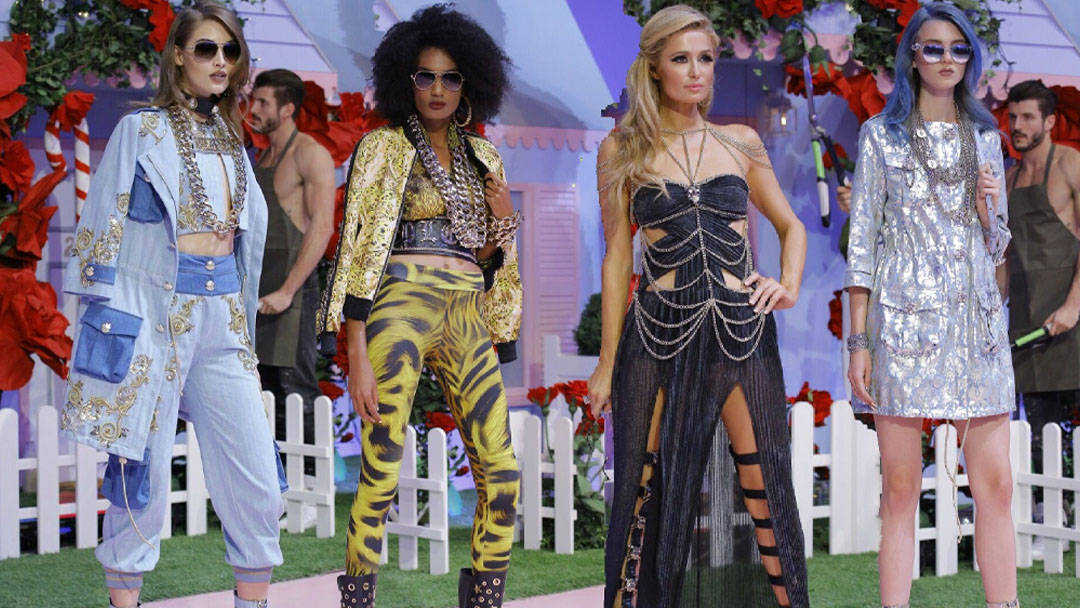Gender-neutral fashion, or unisex fashion, is a movement in the clothing industry that challenges traditional notions of gender-specific attire. Rather than designing clothes exclusively for men or women, gender-neutral fashion creates pieces that anyone can wear, regardless of gender. This approach to style reflects a broader shift towards inclusivity and the rejection of rigid gender roles in society. Here’s an exploration of how gender-neutral fashion is reshaping the landscape of personal style and self-expression.

1. The Evolution of Gender-Neutral Fashion
While gender-neutral fashion may seem like a modern trend, its roots can be traced back to earlier eras when clothing began to break free from strict gender norms.
- Early Influences: In the early 20th century, designers like Coco Chanel introduced women to traditionally masculine styles, such as trousers and tailored suits. This was revolutionary for the time and set the stage for future disruptions in the way fashion and gender intersect.
- The 1960s and 1970s: The counterculture movements of the 1960s and 70s brought a more fluid approach to gender in fashion. Icons like David Bowie, Jimi Hendrix, and Grace Jones blurred gender lines with their eclectic and androgynous styles, challenging societal expectations of what men and women should wear.
- Modern Era: Today, gender-neutral fashion has grown into a full-fledged movement, with many designers and brands creating collections that defy traditional gender labels. Millennials and Gen Z, in particular, have embraced this shift as part of a broader movement towards inclusivity and breaking down binary gender norms.
2. Breaking Free from Traditional Gender Norms
Gender-neutral fashion seeks to dismantle the idea that certain types of clothing are inherently masculine or feminine. Instead, it promotes clothing that is simply designed for people, regardless of their gender identity.
- Clothing as a Form of Expression: In the past, clothing choices were often restricted by societal expectations. Men were expected to wear suits and ties, while women were encouraged to wear dresses and skirts. Gender-neutral fashion allows individuals to express themselves authentically, choosing clothing that reflects their personal style rather than conforming to gendered expectations.
- Rejecting the Binary: Many gender-neutral brands emphasize rejecting the male-female binary altogether. Instead of having separate “men’s” and “women’s” sections, these brands offer clothing that is versatile and designed to suit all body types. This creates more inclusivity and ensures that clothing isn’t restricted to a narrow idea of gender.
3. Key Features of Gender-Neutral Fashion
Gender-neutral fashion isn’t just about removing gender labels from clothing; it also involves specific design choices that make the clothing accessible and comfortable for everyone.
- Loose and Versatile Silhouettes: Many gender-neutral pieces are designed with loose or oversized silhouettes that are flattering on all body types. This eliminates the need for tailoring clothes to specific body shapes traditionally associated with men or women.
- Neutral Colors and Minimalistic Designs: Gender-neutral fashion often incorporates a palette of neutral colors like black, white, beige, and gray, which can be worn by anyone. The designs are usually minimalistic, avoiding overly masculine or feminine details.
- Comfort and Functionality: Functionality and comfort are key aspects of gender-neutral clothing. The focus is on creating pieces that are practical and wearable, rather than being tied to the aesthetic expectations of a particular gender.

4. The Role of Fashion Brands in Promoting Gender Neutrality
A growing number of fashion brands have embraced the gender-neutral movement, offering collections that transcend traditional gender categories.
- High-Fashion Designers: Prominent designers like Alessandro Michele of Gucci and brands like Balenciaga have featured gender-neutral pieces in their collections, with models of various gender identities walking the runway. These luxury fashion houses are helping to normalize unisex clothing on a global scale.
- Independent Labels: Independent brands like Telfar, Eckhaus Latta, and Rad Hourani have been pioneers in gender-neutral fashion. Their collections are designed to challenge the fashion industry’s gender norms and create clothing that everyone can enjoy, regardless of their identity.
- Mainstream Retailers: Even mainstream retailers like Zara, H&M, and Uniqlo have launched gender-neutral lines, making unisex fashion more accessible to a broader audience. These collections often focus on everyday basics, such as jeans, t-shirts, and hoodies, designed to appeal to all genders.
5. The Impact of Gender-Neutral Fashion on Society
The rise of gender-neutral fashion is part of a broader cultural shift towards gender inclusivity and acceptance of diverse gender identities. It has significant implications not only for the fashion industry but also for how society views gender and self-expression.
- Empowerment Through Clothing: For many individuals, especially those who identify as non-binary, gender-neutral fashion offers a way to express themselves authentically without feeling confined to gendered expectations. It can be liberating for people to wear clothes that align with their personal identity rather than societal norms.
- Influence on Pop Culture: Celebrities like Harry Styles, Billie Eilish, and Jaden Smith have embraced gender-neutral and androgynous styles, further popularizing the movement. Their influence helps break down barriers and encourages fans to explore fashion beyond the binary.
- Gender Identity and Expression: The fashion industry’s embrace of gender-neutral clothing has contributed to a greater understanding and acceptance of non-binary and gender-fluid identities. It highlights the idea that clothing should be an expression of the individual, not something that defines or limits their gender identity.
6. Challenges and Criticisms
While gender-neutral fashion has made significant strides, it’s not without challenges and criticisms.
- Sizing and Fit: One of the main challenges of gender-neutral fashion is creating clothing that fits a wide range of body types. Traditional clothing is often designed with specific body shapes in mind, and gender-neutral fashion must find a way to cater to diverse physiques without resorting to a one-size-fits-all approach.
- Commercialization: Some critics argue that large fashion brands are commercializing gender-neutral fashion as a marketing strategy without fully embracing the values of inclusivity. In some cases, these collections may appear superficial or performative, aimed at capitalizing on a trend rather than supporting gender inclusivity in a meaningful way.

7. The Future of Gender-Neutral Fashion
As society continues to challenge traditional gender norms, gender-neutral fashion is expected to become more mainstream and influential in the coming years.
- Inclusive Fashion for All: The future of fashion may see a continued blurring of the lines between “men’s” and “women’s” clothing, with more brands embracing inclusivity and designing for people, not genders. This shift will likely lead to more innovations in design, creating pieces that cater to a wide variety of tastes and body types.
- Customization and Personalization: Advances in technology, such as 3D printing and AI-driven fashion design, may allow for greater personalization of clothing. This could lead to an era where clothing is designed to fit individual preferences and identities, further breaking down gender barriers in fashion.
Conclusion: The Power of Fashion Beyond Gender
Gender-neutral fashion represents a significant cultural shift towards inclusivity, self-expression, and freedom from traditional gender roles. By rejecting the binary approach to clothing, it empowers individuals to dress in a way that reflects who they are, not what society dictates. As this movement continues to grow, it will likely reshape the fashion industry and, more importantly, contribute to a more inclusive and accepting society.


